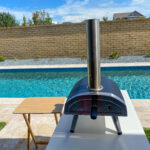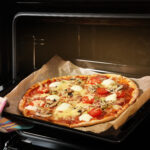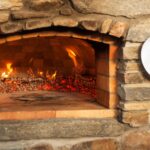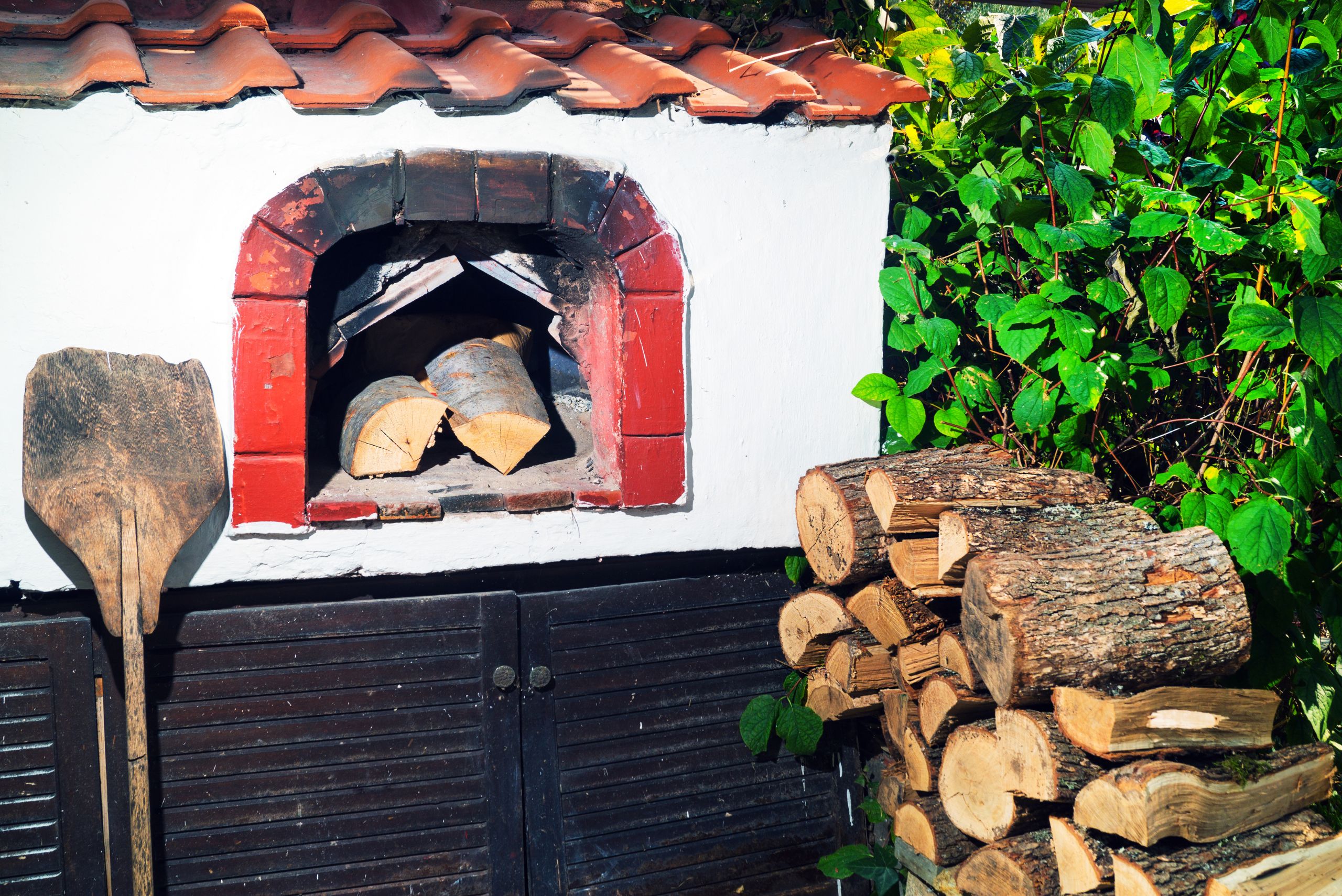A pizza oven is a specialized oven that is designed to cook pizza. These ovens can reach high temperatures that are necessary to cook a pizza properly. A good pizza oven is able to reach high temperatures without the long preheating times and extensive cleanup that standard kitchen ovens require.
There are different types of pizza ovens, including wood-fired, gas-fired, electric, and portable pizza ovens. Wood-fired pizza ovens are the traditional type of pizza oven, and they are known for their ability to impart a unique smoky flavor to the pizza. Gas-fired pizza ovens are more convenient and easier to use, but they don’t offer the same level of flavor as a wood-fired oven. Electric pizza ovens are the most convenient and easiest to use, but they don’t offer the same level of flavor as wood-fired or gas-fired ovens. Portable pizza ovens are designed to be used outdoors, and they are ideal for camping trips or backyard parties.
Whether you are a professional chef or a home cook, having a pizza oven can take your pizza-making skills to the next level. In this article, we will explore the different types of pizza ovens, how they work, and what to look for when buying a pizza oven. We will also provide some tips and tricks for using a pizza oven to make the perfect pizza.
What is a Pizza Oven?
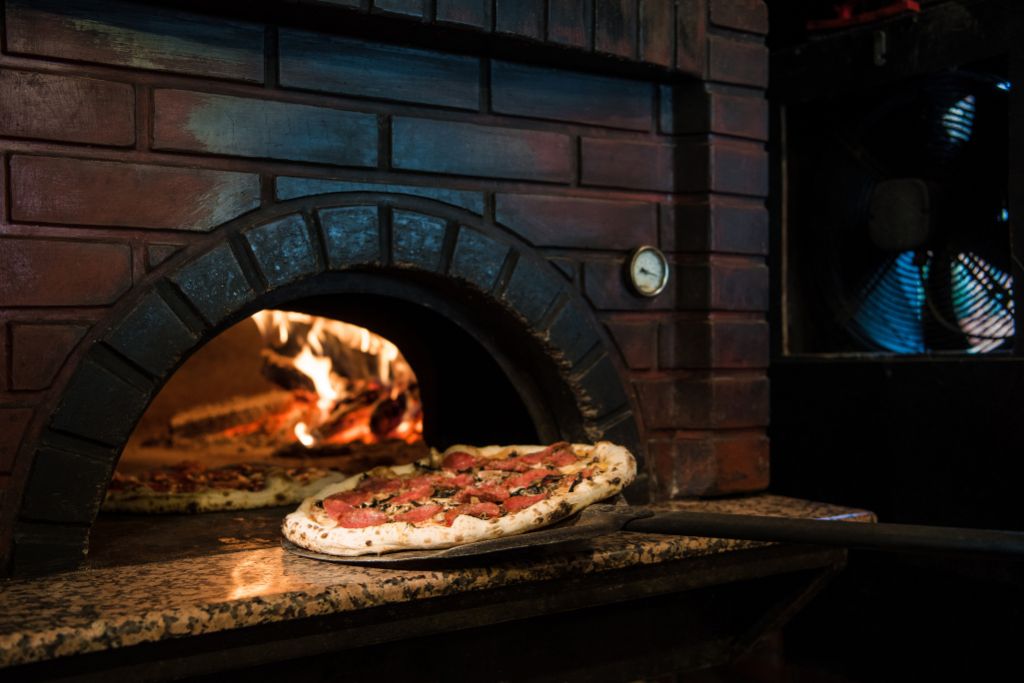
A pizza oven is a specialized oven that is designed to cook pizza to perfection. Unlike a conventional oven, a pizza oven is specifically designed to generate high temperatures quickly and retain that heat for an extended period. This heat is essential in creating the perfect pizza crust, which is crispy on the outside and soft and chewy on the inside.
Pizza ovens come in different types, including wood-fired, gas-fired, electric, and pellet-fired ovens. Each type of pizza oven has its unique features, advantages, and disadvantages. For example, wood-fired pizza ovens are known for their authentic flavor and aroma, while gas-fired pizza ovens are more convenient and easier to operate.
Most pizza ovens are designed to cook pizzas at temperatures ranging from 500°F to 900°F. At these high temperatures, a pizza can be cooked in as little as 60 seconds, resulting in a crispy crust and perfectly melted cheese. Some pizza ovens also come with additional features like adjustable temperature controls, timers, and built-in thermometers to help you cook your pizza to perfection.
In summary, a pizza oven is a specialized oven designed to cook pizza to perfection. It generates high temperatures quickly and retains that heat for an extended period, resulting in a crispy crust and perfectly melted cheese. With different types of pizza ovens available, you can choose the one that best suits your needs and preferences.
History of Pizza Ovens
Pizza is a popular dish worldwide, and it has a long history dating back to the ancient Greeks, Romans, and Egyptians. Pizza ovens, on the other hand, have come a long way from their humble beginnings to the modern, high-tech ovens available today.
Ancient Pizza Ovens
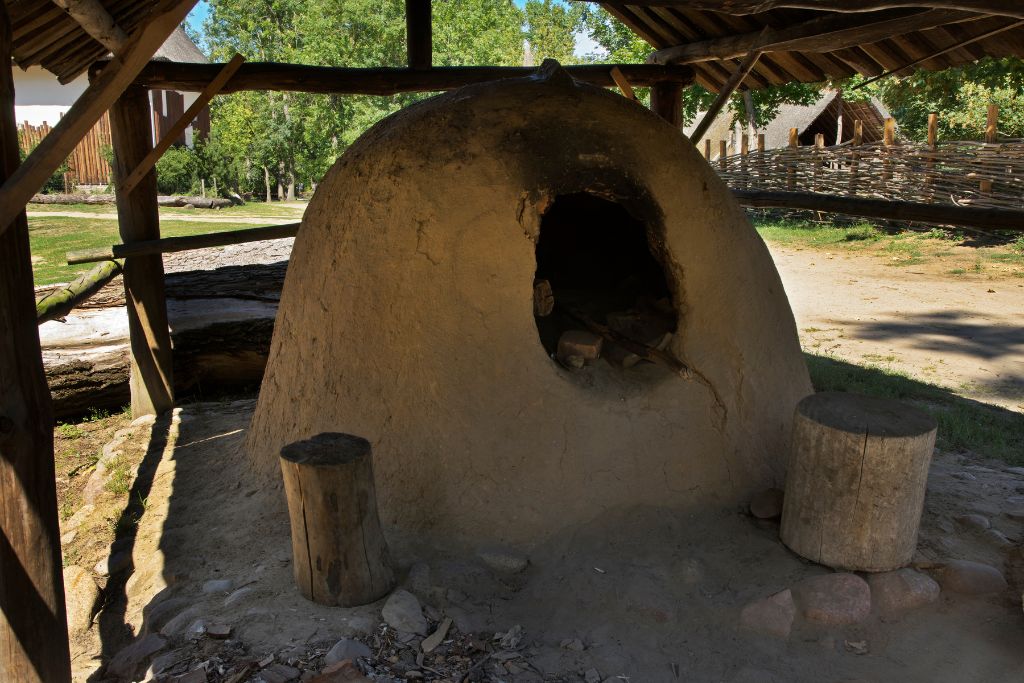
The ancient Greeks and Romans were the first to bake pizza in ovens. They used brick ovens that were heated with wood to cook their pizzas. These ovens were made of brick and clay, and they were built in the ground or on top of a hearth. The ancient Egyptians also had a version of the pizza oven, which was a large clay pot with a fire in the middle.
Modern Pizza Ovens
Modern pizza ovens have evolved significantly since their ancient counterparts. The first modern pizza oven was invented in Naples, Italy, in the late 1800s. This oven was made of brick and was heated by wood. The oven was designed to cook pizzas quickly and evenly, and it was a huge success.
Today, there are many types of pizza ovens available, including wood-fired ovens, gas-fired ovens, and electric ovens. Wood-fired ovens have become increasingly popular in recent years because they produce a unique flavor that cannot be replicated in other types of ovens. Gas-fired and electric ovens are also popular because they are more convenient and easier to use than wood-fired ovens.
In conclusion, pizza ovens have a long and fascinating history that dates back to ancient times. Today, there are many types of pizza ovens available, each with its own unique features and benefits. Whether you prefer a traditional wood-fired oven or a modern gas-fired or electric oven, there is a pizza oven out there that will meet your needs and help you create delicious, mouth-watering pizzas.
Types of Pizza Ovens
Pizza ovens come in different types, each with its own unique features and benefits. Here are some of the most common types of pizza ovens:
Wood-Fired Pizza Ovens
Wood-fired pizza ovens are the traditional ovens used to make Neapolitan-style pizzas. These ovens use wood as the fuel source, and they can reach temperatures of up to 900°F. The high temperature and the wood-fired cooking process give the pizza a crispy crust and a smoky flavor.
Wood-fired pizza ovens come in different sizes and shapes, including dome-shaped, barrel-shaped, and rectangular. They are typically made of brick or clay and require a chimney to vent the smoke.
Electric Pizza Ovens
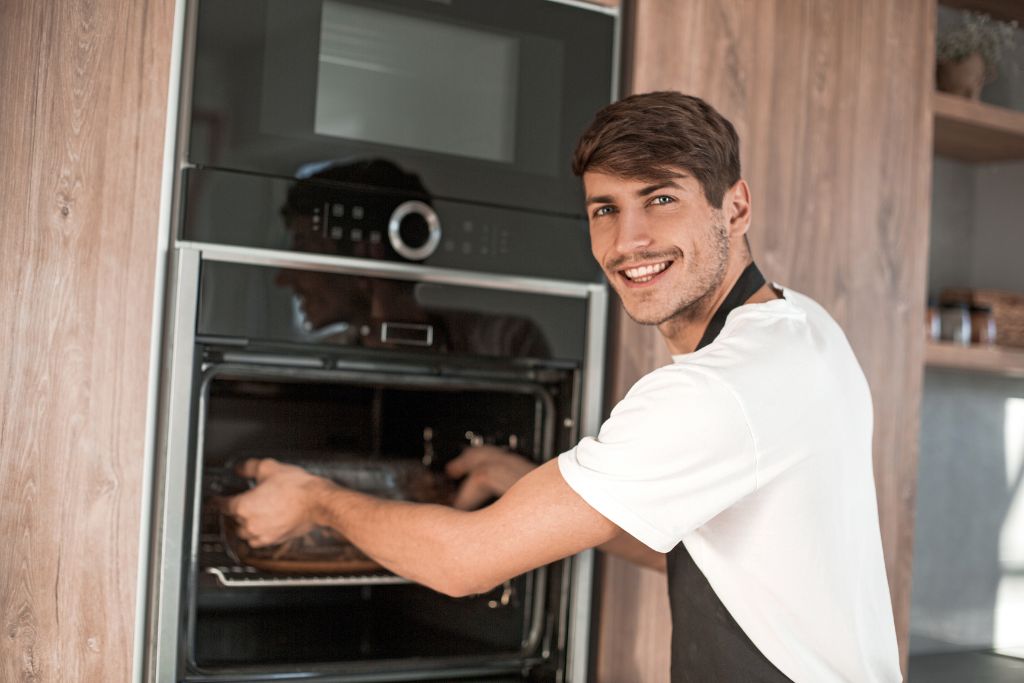
Electric pizza ovens are a popular choice for home pizza makers and small pizzerias. These ovens use electricity as the fuel source, and they can reach temperatures of up to 500°F. They are easy to use and require minimal maintenance.
Electric pizza ovens come in different sizes and styles, including countertop and freestanding models. They are typically made of stainless steel and have digital controls for temperature and cooking time.
Gas Pizza Ovens
Gas pizza ovens are similar to electric pizza ovens, but they use gas as the fuel source. They can reach temperatures of up to 600°F and are ideal for high-volume pizzerias. They are easy to use and require minimal maintenance.
Gas pizza ovens come in different sizes and styles, including countertop and freestanding models. They are typically made of stainless steel and have digital controls for temperature and cooking time.
Conveyor Pizza Ovens
Conveyor pizza ovens are the most efficient type of pizza oven. They use a conveyor belt to move the pizza through the oven, which allows for consistent cooking and high-volume production. These ovens can reach temperatures of up to 600°F and are ideal for commercial pizzerias.
Conveyor pizza ovens come in different sizes and styles, including countertop and freestanding models. They are typically made of stainless steel and have digital controls for temperature and conveyor speed.
In conclusion, choosing the right pizza oven depends on your needs and preferences. Whether you prefer the traditional wood-fired taste or the convenience of an electric or gas oven, there is a pizza oven that can meet your needs.
Components of a Pizza Oven
A pizza oven is a specialized type of oven that is designed to cook pizzas to perfection. It is made up of several components that work together to create the ideal cooking environment for the pizza. In this section, we will discuss the four main components of a pizza oven: Dome, Hearth, Insulation, and Venting System.
Dome
The dome is the most visible part of the pizza oven. It is the arched ceiling that covers the cooking chamber. The dome is usually made of refractory materials like firebrick or clay, which can withstand high temperatures without cracking. The shape of the dome is essential because it helps to create a convection current that circulates the hot air around the cooking chamber. This circulation of hot air helps to cook the pizza evenly and quickly.
Hearth
The hearth is the floor of the pizza oven. It is where the pizza is placed to cook. The hearth is typically made of the same refractory materials as the dome. The hearth needs to be able to withstand high temperatures and be able to absorb and retain heat. The heat-absorbing properties of the hearth are essential because they help to cook the pizza evenly from the bottom up.
Insulation
Insulation is a crucial component of a pizza oven. It helps to retain heat inside the cooking chamber, which is necessary for cooking the pizza. The insulation is usually made of ceramic fiber or other high-temperature materials. The insulation is placed between the dome and the outer shell of the pizza oven. This insulation layer helps to keep the heat inside the cooking chamber and prevents it from escaping.
Venting System
The venting system is responsible for regulating the airflow inside the pizza oven. It is essential for controlling the temperature inside the cooking chamber. The venting system is made up of two parts: the chimney and the flue. The chimney is the vertical pipe that extends above the dome of the pizza oven. The flue is the opening in the cooking chamber that connects to the chimney. The venting system works by drawing air into the cooking chamber through the flue and then venting it out through the chimney. By adjusting the venting system, you can control the temperature inside the pizza oven and ensure that the pizza cooks evenly.
In conclusion, a pizza oven is made up of several components that work together to create the ideal cooking environment for the pizza. The dome, hearth, insulation, and venting system are all essential for cooking the perfect pizza. By understanding these components, you can choose the right pizza oven for your needs and cook delicious pizzas every time.
How to Use a Pizza Oven
Using a pizza oven can be a bit intimidating if you’ve never done it before. However, with a little practice and patience, you can become a pro at making delicious homemade pizza. Here are the basic steps to using a pizza oven:
Preheating the Oven
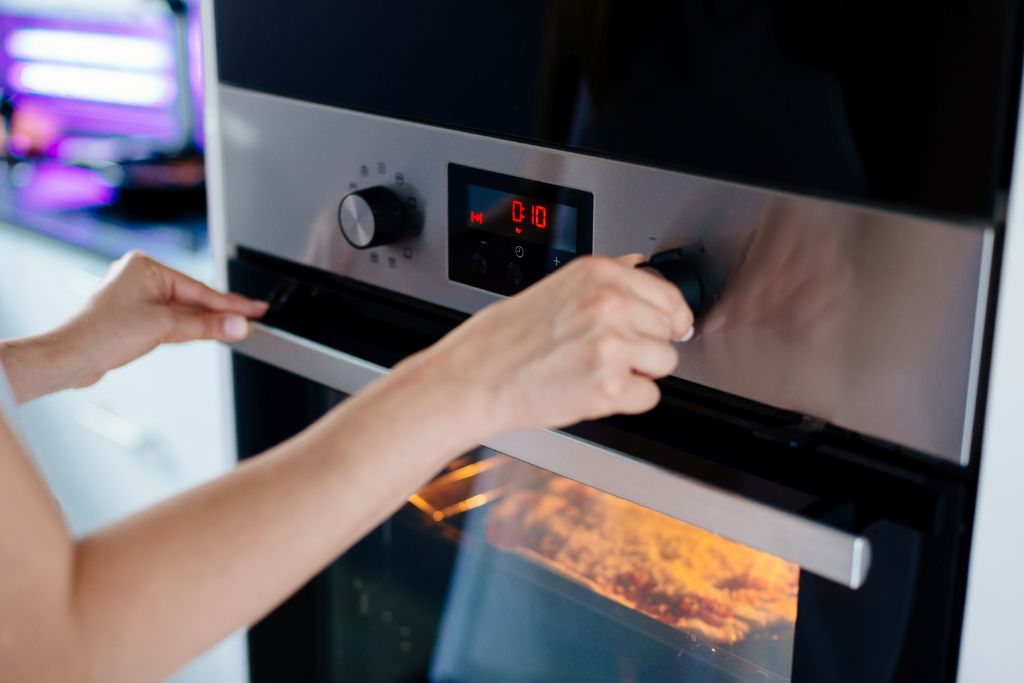
Before you start baking your pizza, you need to preheat the oven. The ideal temperature for a pizza oven is between 700°F and 900°F. This high temperature is necessary to cook the pizza quickly and evenly and to get that crispy crust that we all love.
To preheat the oven, you need to start by lighting the fire. If you’re using a wood-fired pizza oven, you’ll need to start the fire with kindling and wood. If you’re using a gas pizza oven, you’ll need to turn on the gas and ignite the burners.
Once the fire is going, you need to let the oven heat up for at least 30 minutes. You can use an infrared thermometer to check the temperature of the oven. When the oven reaches the desired temperature, you’re ready to start baking.
Baking the Pizza
Now that your oven is preheated, it’s time to start baking your pizza. Here’s how to do it:
- Stretch out your pizza dough to the desired size and thickness.
- Add your sauce and toppings to the pizza.
- Use a pizza peel to slide the pizza into the oven.
- Use the pizza peel to rotate the pizza every 30 seconds or so to ensure even cooking.
- When the pizza is done, use the pizza peel to remove it from the oven.
It’s important to remember that cooking times may vary depending on the oven and the thickness of the pizza. Generally, a thin crust pizza will cook in 2-3 minutes, while a thicker crust pizza may take 4-5 minutes.
In conclusion, using a pizza oven is not as difficult as it may seem. With a little practice and patience, you can make delicious homemade pizza that will impress your friends and family. Remember to preheat the oven to the ideal temperature and to rotate the pizza regularly to ensure even cooking.
Maintenance of a Pizza Oven
Proper maintenance of a pizza oven is essential to ensure it lasts a long time and operates safely. The two main aspects of maintenance are cleaning and regular inspection.
Cleaning
Cleaning the pizza oven after each use is crucial to prevent the buildup of grease, ash, and other debris that can cause a fire hazard. Here are some tips for cleaning your pizza oven:
- Wait until the oven has cooled down before cleaning it.
- Use a brush to remove any ash or debris from the oven floor and walls.
- Use a damp cloth to wipe down the interior of the oven.
- If necessary, use a scraper to remove any stubborn stains or debris.
- Avoid using harsh chemicals or abrasive scrubbers that can damage the oven’s surface.
Regular cleaning not only keeps the oven in good condition but also ensures that the pizzas cooked in it taste great.
Regular Inspection
Regular inspection of the pizza oven is vital to identify any potential issues before they become major problems. Here are some things to look out for during a regular inspection:
- Check the oven’s exterior for any signs of damage, such as cracks or chips.
- Inspect the oven’s interior for any signs of wear and tear, such as cracks or loose tiles.
- Check the oven’s chimney for any blockages or damage.
- Ensure that the oven’s door is closing correctly and tightly.
By inspecting the pizza oven regularly, you can catch any issues early on and prevent them from becoming more severe. It is recommended that you inspect your pizza oven at least once a year.
In conclusion, proper maintenance of a pizza oven is crucial to ensure it lasts a long time and operates safely. Regular cleaning and inspection are essential to keep the oven in good condition and prevent any potential issues.
Benefits of Using a Pizza Oven

Pizza ovens are designed to reach very high temperatures, making them the perfect appliance to achieve a crispy, delicious crust. Here are some benefits of using a pizza oven:
- Faster Cooking: Cooking at high temperatures allows the pizza to cook faster. Unlike baking in a traditional oven that takes around 20 to 30 minutes, cooking in a pizza oven only takes a few minutes.
- Even Cooking: Pizza ovens cook pizzas evenly due to the high temperature and the even distribution of heat. This ensures that the toppings, cheese, and crust are all cooked perfectly.
- Versatility: Pizza ovens are not just for cooking pizzas. They can also be used for cooking other foods such as roasts, vegetables, and bread. This makes them a versatile addition to any kitchen.
- Energy Efficient: Pizza ovens are energy-efficient as they use less energy than a traditional oven due to their smaller size and shorter cooking time.
- Better Flavor: Pizza ovens cook pizzas at a very high temperature, which gives them a unique flavor that cannot be achieved in a traditional oven. The high heat also caramelizes the sugars in the dough, giving the crust a crispy texture and a delicious flavor.
- Healthier Option: Cooking pizzas in a pizza oven is a healthier option as it allows the pizza to cook quickly, which helps to retain the nutrients in the toppings. Additionally, the high temperature of the pizza oven helps to cook off excess fat and grease, making the pizza a healthier option.
In summary, pizza ovens are a great tool to have in your kitchen. They cook pizzas quickly and evenly, are versatile, energy-efficient, and provide a unique flavor that cannot be achieved in a traditional oven.
Choosing the Right Pizza Oven
When it comes to choosing the right pizza oven, there are a few things to consider. First, you need to determine whether you want an indoor or outdoor oven. Outdoor ovens are great for entertaining guests and creating a fun atmosphere, while indoor ovens are more convenient for everyday use.
Next, you need to decide on the type of fuel you want to use. Pizza ovens can be powered by wood, gas, or electricity. Each fuel type has its own advantages and disadvantages, so it’s important to choose the one that works best for you.
Wood-fired pizza ovens are the most traditional option and provide a unique flavor to your pizza. However, they require more maintenance and can take longer to heat up. Gas-powered ovens are more convenient and easier to use, but they don’t provide the same smoky flavor as wood-fired ovens. Electric ovens are the easiest to use and maintain, but they don’t provide the same level of authenticity as wood or gas ovens.
Another important factor to consider is the size of the oven. Pizza ovens come in a range of sizes, from small tabletop models to large outdoor ovens. If you plan on using your oven for entertaining, a larger oven may be more appropriate. However, if you only plan on making pizza for your family, a smaller oven may be sufficient.
Finally, you need to consider your budget. Pizza ovens can range in price from a few hundred dollars to several thousand dollars. While it may be tempting to opt for a cheaper oven, keep in mind that you get what you pay for. A higher-priced oven may be more durable and provide better results in the long run.
Overall, choosing the right pizza oven requires careful consideration of your needs and preferences. By taking the time to research your options and weighing the pros and cons of each, you can find the perfect oven to suit your needs.


